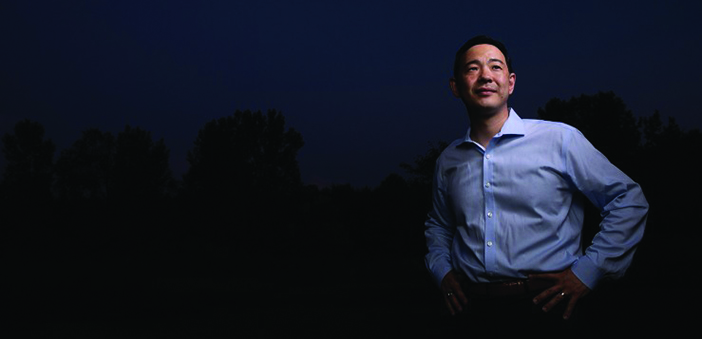International Space Station experiments co-led by a Brown physician will help inform understanding and treatment of cardiovascular disease.
When Peter Lee ’94 MD’05 PhD’15, MS, MPH, leaves his Brown University lab and looks up into the night sky, he can sometimes catch a glimpse of his own research project.
A practicing cardiothoracic surgeon and an assistant professor of pathology and laboratory medicine (research), Lee is a member of a multi-institution team that has collaborated with the National Institutes of Health and NASA to send human heart “tissue-on-a-chip” specimens into space. The tissue samples were launched into the stratosphere aboard a Cargo Dragon spacecraft as part of SpaceX CRS-27, a resupply mission to the International Space Station that blasted off from NASA’s Kennedy Space Center this spring.
The project, led by researchers at Johns Hopkins University, is designed to monitor the tissue for changes in the mitochondria of heart muscle cells, as well as their ability to contract in low-gravity conditions. Astronauts on board during the mission will also introduce three medicines to the samples in an effort to prevent heart cell changes known or suspected to occur in people undertaking long-duration spaceflights.
The low-gravity environment of the space station provides an ideal laboratory in which to study aging-like biological processes that otherwise take place over much longer periods of time on Earth, Lee explains.
“Researchers have found that the changes that happen to human tissues in space are similar to what happen during the course of normal aging—but over a few weeks or a month compared to many years,” Lee says. “Our experiment is using the space microgravity environment as a model of accelerated aging so that we can observe cellular changes in heart muscle that would normally take a long time to happen, and quickly translate them into experiments here on Earth.”
The results of the space experiments have far-reaching implications.
“What we learn from these experiments with heart tissue can inform how we treat age-related cardiac problems in patients,” he says. “The study will not only improve understanding of how the heart cells respond to drugs in space, but could also lead to innovations in drug development to help patients on Earth.”




